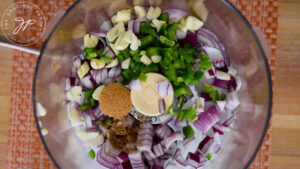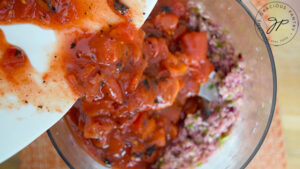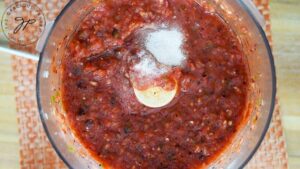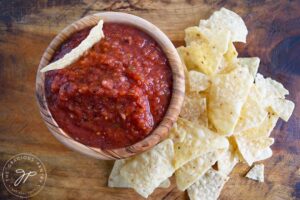Recipe For Restaurant Salsa
This post may contain affiliate links. If you make a purchase through links on this site, I may earn a commission.
Read my Privacy Policy.
If you love the red salsa you get in a restaurant, you can easily and quickly make this recipe for restaurant salsa at home!
Ya know that delicious red salsa you get at your favorite local Mexican food restaurant? The kind that comes with an endless basket of corn chips? The red stuff that is sometimes also served with the green stuff? (The green stuff would be salsa verde).
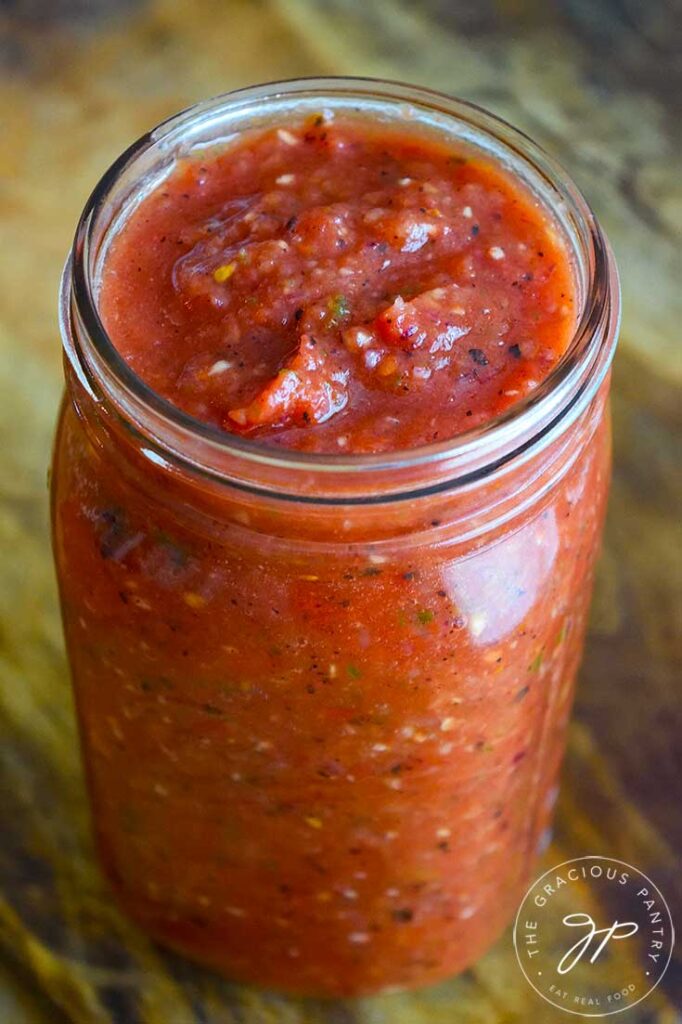
That’s what we’re making here today, and I can tell you it’s one of the most delicious homemade salsas I’ve made to date!
What Does Restaurant Style Salsa Mean?
Restaurant-style salsa means a more blended salsa made with raw ingredients. Any chunks are very small. It is slightly sweet (although you might not realize it until you really think about it), and is often served as a mild or medium-hot salsa.
Typically, if you want a hotter salsa, you would ask for the salsa verde. But this differs from restaurant to restaurant.
What's the Difference Between Chunky Salsa And Restaurant Style Salsa?
The difference is quite literally in the chunkiness of the sauce.
Chunky salsa has larger chunks of onions and tomatoes.
Restaurant salsa has very tiny chunks if any at all.
How Is Salsa Made?
While I can’t vouch for store-bought salsa, homemade salsa is made from fresh ingredients that are either chopped with a knife or placed in a food processor for a finer, smoother, and thinner consistency.
Is It Cheaper To Make Or Buy Salsa?
While there is always an exception to the rule, in most cases, making your own salsa is cheaper. Particularly if you grow your own veggies.
Do You Put Vinegar In Salsa?
Typically, vinegar is added to salsa that gets canned at home. While some people will simply add lemon or lime juice for this, some recipes do call for vinegar.
In fresh salsa that you will be making at home and eating within a few days (not canning), vinegar is not necessary and is rarely found in salsa recipes.
What Brand Salsa Is Best?
If you prefer to purchase your salsa at the store, there are many brands to choose from, and the “best” comes down to your own tastebuds.
That said, if you are looking for the healthiest salsa, opt for salsa without added sugars and a lower sodium content.
Is Salsa Cooked Or Raw?
Salsa can be either cooked or raw. In either case, it should be served at room temperature.
Generally speaking, cooked salsas get canned, while fresh (uncooked) salsas are made to eat within a few days. But this, of course, can vary a lot.
Is Jarred Salsa Healthy?
In theory, yes. But “healthy” is subjective. If you are a heart patient on a low-sodium diet, jarred salsa will be something to avoid.
The healthiest jarred salsas have no added sugar or oil and have a lower sodium content.
Sodium varies greatly from salsa to salsa. If it’s a concern, you are better off making fresh salsa at home with little to no salt.
Why Is Salsa Better The Next Day?
As with many sauces, salsa is usually better the next day. This is because the juices of the blended ingredients have time to meld or “marry.”
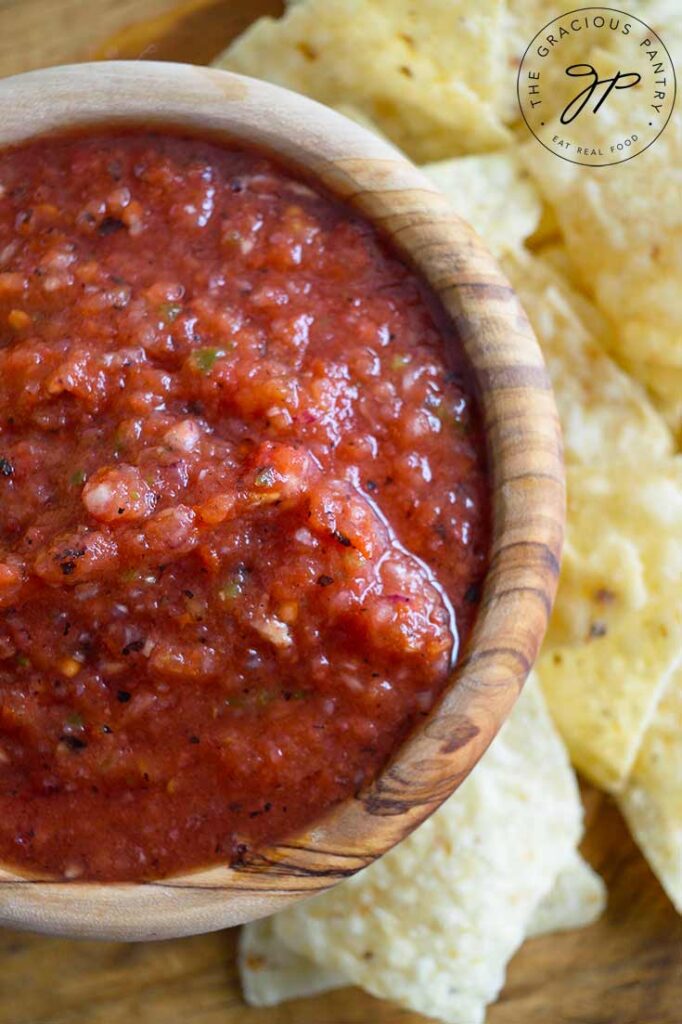
Restaurant Salsa Ingredients
Red onion – You can chop this coarsely. Just a quick chop to get it small enough for the processor to handle.
Jalapeño pepper – Remove the seeds if you want a mild to medium spice, or blend them in if you like hot salsa.
Garlic cloves – If you like more garlic, you can use large cloves or add an extra clove or two.
Lime juice – If you like a stronger lime flavor, add up to 3 tbsp of lime juice. Start with 1, and then blend in more to taste.
Salt – I used pink Himalayan salt, but use whatever salt you normally use in the kitchen. You can adjust this at the end by pulsing in more salt to taste after you’ve finished making the salsa.
Ground cumin – This is optional but really rounds out the flavor. If you hate cumin, omit it.
Coconut sugar or Sucanat – Use any sweetener you normally use in the kitchen. This can also be adjusted at the end if you like a sweeter salsa.
Ffire-roasted diced tomatoes – I used fire-roasted, but you can also use regular diced tomatoes.
Cilantro – This is not in the recipe. Most restaurant salsa will have cilantro in it. However, I know many of my readers don’t care for cilantro. If, like me, you love cilantro, feel free to blend in about a ½ cup.
How To Make This Recipe For Restaurant Salsa
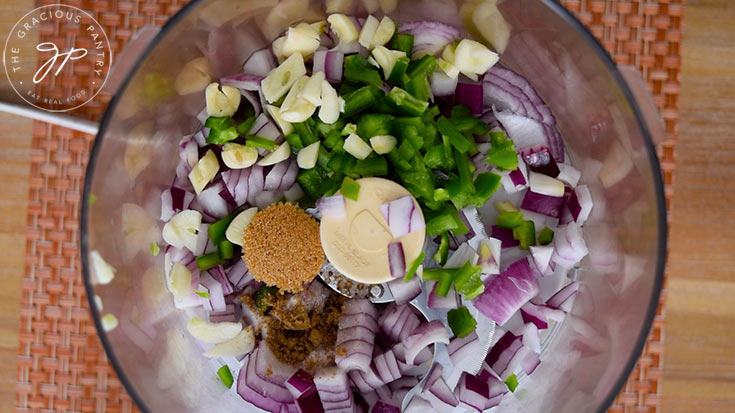
Pulse everything but the tomatoes in a food processor.
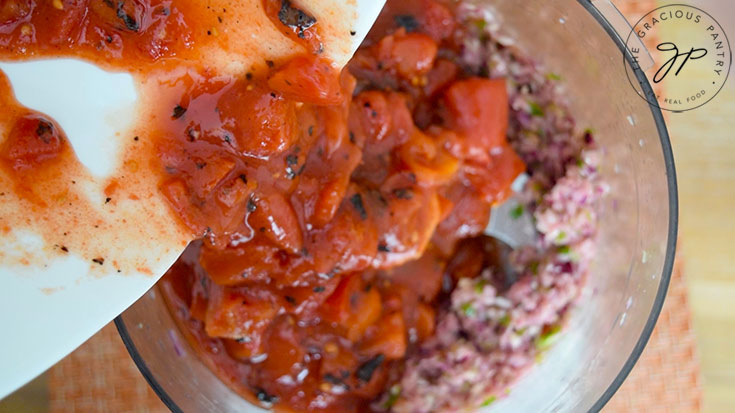
When finely chopped, add tomatoes and pulse.
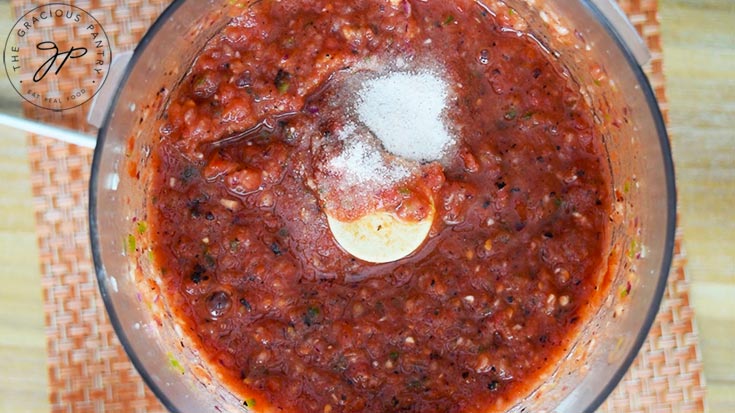
Adjust the salt to taste.
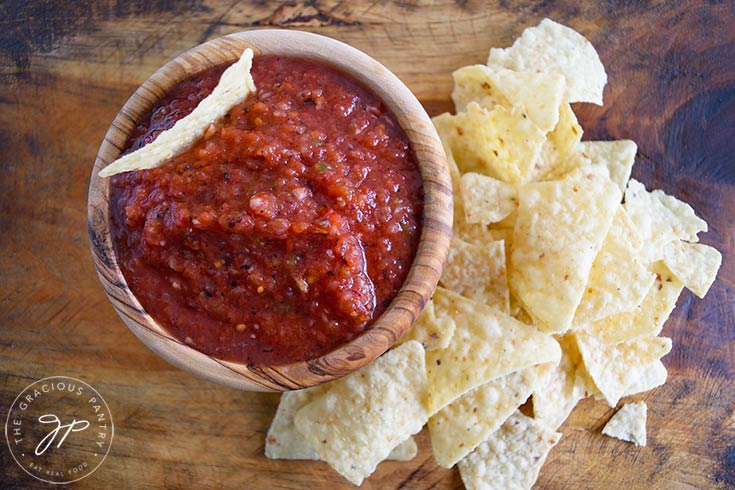
Transfer to a jar or bowl and serve with corn chips.
How To Store Restaurant Salsa
This recipe makes a generous 4 cups of salsa. If it doesn’t all get eaten, you’ll want to keep it in the fridge in an air-tight container.
How Long Does Restaurant Salsa Last?
This salsa will keep in the fridge for up to 3 or 4 days.
Can You Freeze Salsa?
While freezing will change the texture, you can freeze this in ice cube trays to use in soups and stocks. This salsa will freeze well for up to 4 months.
Need Recipe Supplies?
SUBSCRIBE
Remember to subscribe to my free newsletter to receive all my latest recipes in your inbox. Click here to sign up!
More Salsa Recipes
- Strawberry Salsa
- The Best Salsa Verde
- Pico De Gallo (Delish Knowledge)
SUBSCRIBE
Remember to subscribe to my free newsletter to receive all my latest recipes in your inbox. Click here to sign up!

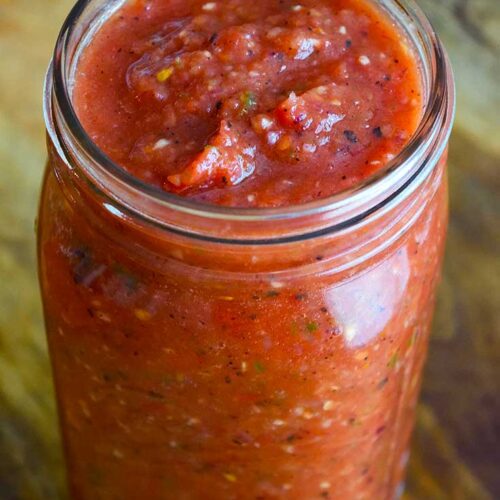
Restaurant Salsa Recipe
CLICK TO WATCH THIS RECIPE IN ACTION!
Equipment
- Food processor
Ingredients
- 1 cup chopped red onion (about ½ a large onion)
- 1 medium jalapeno pepper
- 3 medium garlic cloves
- 1 tbsp. lime juice (or two if you like a stronger lime flavor)
- 1 tsp. salt
- ¼ tsp. ground cumin
- 1 tsp. granular sweetener (like coconut sugar, monk fruit or Sucanat)
- 28 oz. can fire roasted diced tomatoes (regular diced tomatoes work too)
Instructions
- Pulse everything but the tomatoes in a food processor.

- When finely chopped, add tomatoes and pulse.

- Adjust the salt to taste.

- Transfer to a jar or bowl and serve with corn chips.




